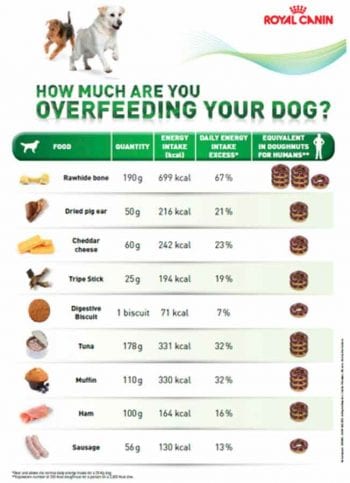14 Jan 2019
Mike Davies offers tips on how to approach this issue in practice – including tackling owner denials and achieving compliance.

Image © dennisvdwater / Adobe Stock
Direct contact time with clients is quite short, with most practices only offering between 10 and 15 minutes for first-opinion consultations.
In addition, clients rarely make an appointment due to concern about weight gain in their pets. Therefore, discussions about excess weight usually need to be instigated by staff in the practice during a consultation for something else.
Best practice is to refer the pet to a weight “specialist” in the practice who can dedicate more time to the individual case.
This article is specifically about activity in the consulting room, but this should be supported by messages about the risks associated with obesity from staff in the waiting room and other practice communications – including posters, handouts, newsletters, the internet and social media sites.
In the author’s experience, several important key objectives exist for the consultation. Here, he provides his top 16 recommendations.
Establish and record the bodyweight and body condition status of the pet, and compare with the previous history to identify changes.
Confirm who looks after the pet on a daily basis. Who provides food, treats and exercise – the person attending the consultation, another member of the family, or friends or neighbours?
Decisions about management have to be implemented by everyone responsible.
Establish exactly what foods, treats, snacks and supplements are given to the pet, and identify areas for improvement.
The 2016 PDSA Animal Wellbeing (PAW) Report found 26% of dogs received scraps or leftovers as part of their main meal, while many owners (27%) fed daily treats – so this is a major contributing factor in obesity.
However, feeding time and offering treats to a pet are two of the main daily activities that reinforce the human-companion animal bond, so recommendations to reduce overall calorie intake will need to still allow for treats to be given – for example, by giving as part of the main ration, or low-calorie treats.
Do not be afraid to ask the owner what he or she thinks about his or her pet’s bodyweight. If he or she does not realise his or her pet has a problem, show him or her bodyweight and body condition score charts, and ask him or her to check the pet against what is recommended.
Many owners do not realise their pet is overweight. A dog presented to one of the author’s geriatric clinics was so obese it could hardly walk into the consulting room. The owner genuinely did not realise her dog was so overweight because it had been developing over several years – she thought its mobility problems were due to advancing age.
Ask the owner if he or she knows about the health risks associated with obesity.
Many owners do not accept being overweight is a real problem, especially if he or she and his or her family are overweight. Therefore, it is important to provide evidence obesity is serious. When dealing with obese clients, it is important to discuss the issues sensitively.
After a consultation, an owner will not be able to recall a lot of what he or she has been told; therefore, it is important to back up what is said with written documents. Ideally, these should contain information tailored to the individual pet.
If the owner does not appreciate the seriousness of obesity and the need for his or her pet to lose weight, give him or her educational materials to read and make a repeat appointment (with a weight clinic if your practice runs one) to set up a strategy to achieve weight loss.
A lot of free educational materials are available from pet food manufacturers and independent sources – for example, the WSAVA has an excellent set of materials on its website (WSAVA, 2016; Figure 1).
If your practice has a client base whose primary language is not English, consider printing materials – including leaflets and wall posters – translated into the most common languages, as the main carer(s) of the pet may not understand English well.
Be sensitive to cultural differences that may obstruct implementation of your recommendations – for example, Muslim owners may not accept feeding pork-containing foods to their pet.

Generally, the author finds materials with strong graphics are more effective than those with large amounts of text alone. For example, a lot of clients stated they were shocked at how many calories some snacks contained after seeing a poster converting human food snacks into “doughnut equivalents”, such as Figure 2.
In the 2016 PDSA PAW Report, 18% of owners matched their dog’s body shape to images of body condition score four or five out of five. However, only 15% of owners said their dog was overweight or obese. Therefore, clients need help in recognising obesity.
If an owner remains in denial about the seriousness of his or her pet’s obesity, determine why. For example, is it lack of knowledge about the risks? Does he or she not trust the individual offering the advice?
A responsible owner who cares about his or her pet would never deliberately hurt it by “killing with kindness” through overfeeding – so acceptance that obesity causes harm, may cause disease and shortens life expectancy is important to motivate the owner to enrol his or her pet on a weight loss programme. Good communication skills are important to achieve this.
Some owners will respond positively to criticism and the guilt associated with the assumption they are responsible for harming their pet by allowing it to become obese or not getting their pet to lose weight. However, this approach can have the reverse effect and demotivate many owners.
So, it is important to tailor advice to suit the individual client. If an owner refuses to accept advice provided by one member of staff, consider referring him or her to another member of staff who has a different “bedside manner”.
Unfortunately, despite your best efforts, some clients will never follow recommendations. This can present a welfare issue for the pet – the RSPCA has prosecuted owners for repeatedly failing to try to achieve weight loss in an obese dog, and non-compliant clients need to be made aware of their responsibility under the Animal Welfare Act.
Avoid being too judgemental about the owner and do not directly criticise him or her, as some will have been irresponsible by overfeeding the pet; however, this will not be true for others.
For example, some dogs – including Labrador retrievers – are predisposed to eat excessively due to genetic factors that impair normal satiety feedback mechanisms (Raffan et al, 2016). Anyone who has owned a Labrador retriever knows how difficult it can be to stop it seeking out and stealing foods.
Direct criticism of owner behaviour makes him or her feel guilty and can alienate him or her – resulting in non-compliance with advice.

Identifying a problem without giving the owner an action plan to follow when he or she leaves the consulting room is pointless. So, give owners something to do and arrange a method for monitoring their success.
The American Animal Hospital Association (AAHA) has published two reports on owner compliance; AAHA (2003) is a summary. They involved 1,340 patients from more than 240 practices.
Key findings – resulting in failure to comply with veterinary recommendations – were:
It is important your practice has an agreed policy on how to manage overweight and obese patients, because mixed messages from staff will dilute the effectiveness of management efforts.

For example, if one member of staff says a pet is only slightly overweight, whereas another says the pet is seriously obese, the client will be confused.
Once a weight problem has been identified, it is good practice to offer the owner a range of options for treatment. Start with low-cost, easy-to-achieve changes – for example, cutting high-calorie snacks and treats, and increasing exercise – to major changes, including radical change to lifestyle and diet (Figure 4).
Try to set realistic, easy-to-achieve targets for changes in lifestyle or feeding – and monitor outcomes. Missed repeat appointments should be followed up as soon as possible afterwards.
Whatever interventions you implement to manage obesity, put in place a clinical audit trail so you can compare the effectiveness of your recommendations. Make sure the relevant details for each case are recorded at the end of the consultation.